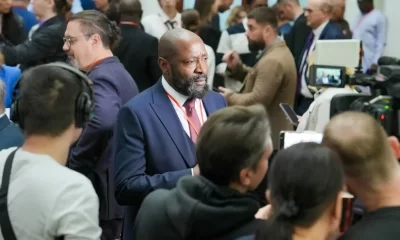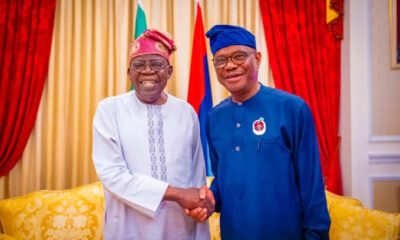Business
Why Community Mobilization Matters in Politics and Business, by Kator Ifyalem

In an age of slick marketing campaigns and big-budget political advertisements, it’s easy to forget the raw power of people coming together at the local level. But make no mistake: grassroots mobilization is alive and well, and it’s reshaping both our political landscape and the business world. I have seen it for myself-the power of grassroots initiatives. It’s a force that no politician or business leader can any longer afford to ignore.
Why Grassroots Matters
But let’s cut to the chase: grassroots mobilization works because it’s authentic. In politics, it is the difference between a candidate who parachutes into a community with canned talking points and one who has built genuine relationships with voters. In business, it is the contrast between a faceless corporation and a company that’s woven itself into the fabric of local life.
Think about it. When was the last time a TV ad made, you feel truly connected to a cause or a brand? Now, compare that to the last time a friend passionately told you about a local issue or a product they love. That’s the grassroots difference.
So, how do you tap into this wellspring of community energy? Here’s my take:
Listen, don’t lecture: Before even thinking about mobilizing people, pipe down and listen. What are the things that keep your community awake at night? What sets their eyes ablaze with excitement? You can’t lead a movement if you don’t know what moves people.
Find your local heroes: Every community has its influencers, and I don’t mean Instagram celebrities. I’m talking about the coach everyone respects, the teacher who’s been changing lives for decades, the small business owner who knows everyone by name. These are your golden tickets to genuine community connection.
Give people ownership: Nothing kills grassroots enthusiasm faster than top-down control. If you’re in politics, let local supporters shape your message in their own words. If you’re in business, consider community-led initiatives that give customers a real stake in your brand.
Embracing the Messy: Grassroots movements are not clean and pretty; they’re messy, emotional, sometimes chaotic, and that’s what makes them great. Don’t overmanage-provide resources and support, then let the magic happen.
Show up regularly: You don’t build community trust as a one-and-done exercise. You show up again and again, even when there is no immediate payoff. It means being there for the little league games and the town hall meetings, not just when you need votes or sales.
Leverage technology, but don’t rely on it: social media and other digital platforms can help spread your message further, but not as a replacement for actual face-to-face interaction. Leverage technology to help with organization and communication, but not at the expense of interpersonal relationships.
Celebrate small wins: Grassroots movements are all about momentum. You shouldn’t wait until after the big win to acknowledge the efforts of your supporters. Celebrate with every signed petition, every new volunteer, every little step forward.
I get it: Grassroots mobilization is hard work. It is time-consuming, it’s emotionally demanding, and the results are sometimes not always immediately visible on a balance sheet or in a poll number. But when it does work – and it does work – the results are truly transformative.
It is the difference between politics and the skin-of-your-teeth win that builds a movement which will reshape community for years to come. In business, it is the line between merely another company and turning into a loved local institution customers will defend tooth and nail.
More importantly, successful grassroots mobilization builds up something we so much need in today’s world: a sense of real community. It reminds the people that their voice means something and that people coming together can make changes.
So, whether gunning for office or building a business that outlives one, do not make the mistake of discounting or downplaying community mobilization. This is not a tactic; it is commitment to people-centeredness. And that, in my book, is always a winner.
























